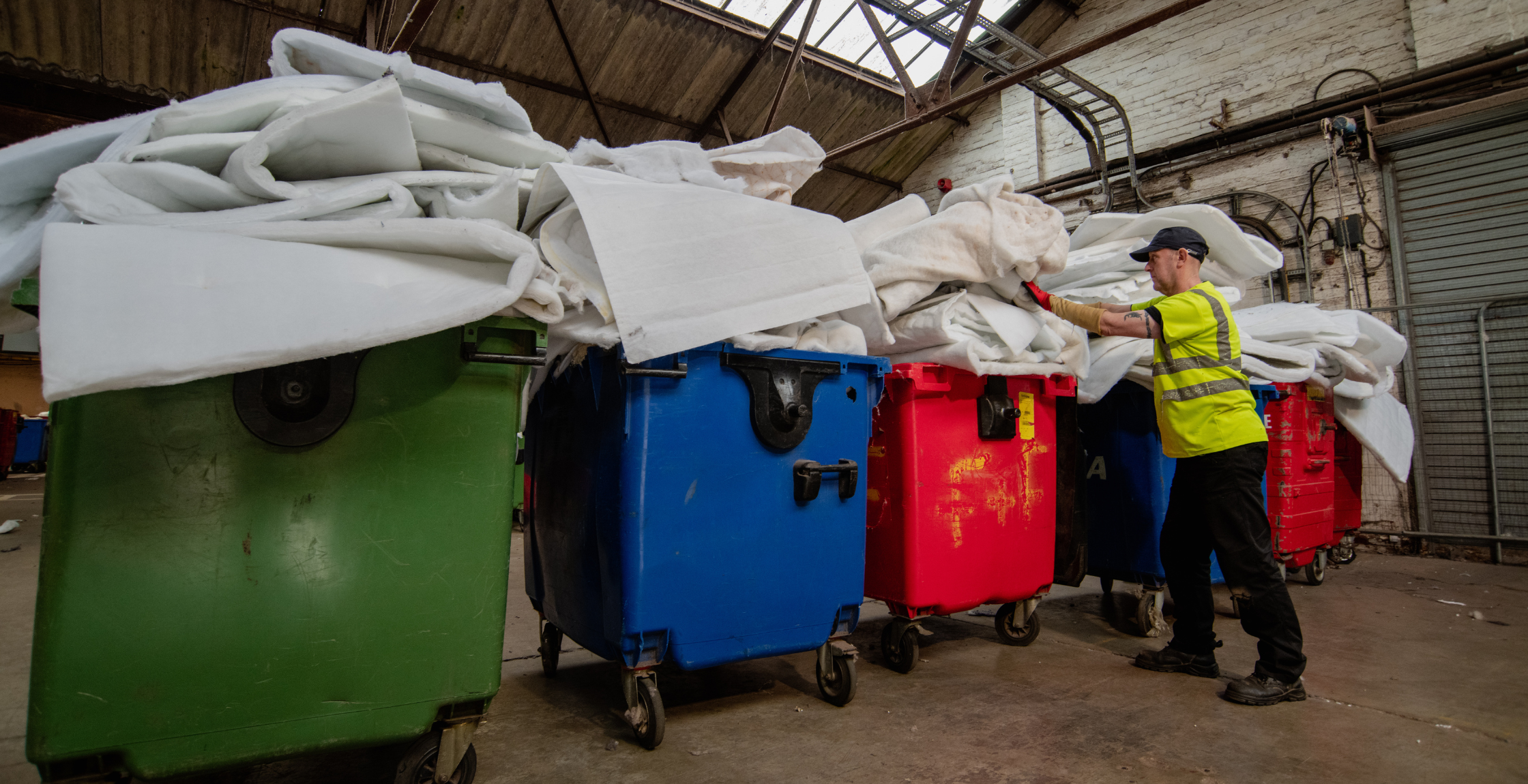Home Mattress Recycling
Need to recycle your old mattress?
Our sister company, The Mattress Recycling People, can take care of it!

With 8.5 million mattresses sent to landfill sites each year, and more and more consumers purchasing comfort night guarantee mattresses online, the bulky waste problem isn’t set to be resolved any time soon.
Mattress recycling is a sustainable solution to a growing environmental issue and not only helps the planet by reducing waste going to landfill, but also supports businesses to recoup losses at a time when the economy is under pressure.
Mattresses are created using a range of materials including metal coils, cotton and wool fibres, springs, foam and other textiles, with little thought on how to recycle or reuse the product in the future. The 19 component parts that make up a mattress are difficult to separate and therefore create a challenge for recyclers.
At TFR Group, our CEO and founder Nick Oettinger has been able to create a unique system to simplify mattress recycling. Each mattress is put through a waste acceptance procedure and broken down into its component parts. Steel springs are baled and sent on to scrap metal merchants, while textiles are blended and baled, with the raw products sent on for further processing. Foam is processed into new products in-house.
All materials are segregated, processed and thoroughly sanitised, then put through a strict quality control process. The components are then used to manufacture new products in a range of industries, completing the circular economy.
Mattresses are a source of bulky waste, which means they are typically very costly items to move in huge quantities as they require multiple transport vehicles. To support mattress recycling on a larger scale it takes investment in state-of-the-art technology to help transport and reduce the capacity taken up by mattresses.
TFR GROUP has developed a revolutionary mattress compression system to support combatting issues faced with bulky waste collection. The unique mattress compression system allows a standard 40ft trailer that on average carries 67 mattresses to transport 450 mattresses, increasing capacity by 572%, reducing the CO2 impact of multiple trips.
Approximately 8.5 million mattresses are sent to landfill each year in the UK, and that figure continues to rise due to a surge in demand for purchasing mattresses online during the recent pandemic lockdowns.
Mattress sales continue to rise year on year, growing 50 per cent over the last decade, which increases the amount of waste produced. A new trend has emerged in recent years which has transformed mattress sales and consumer habits like never before. ‘Bed in a box’ online mattress retailers have grown significantly over the last few years and, during the pandemic, sales soared by 200% or more for several retailers. With many offering 100 to 360 night comfort guarantees, the number of barely used mattresses being returned and sent to landfill became a significant problem for retailers and the environment.
As sales increased, so did the number of returns, with many brands seeing up to 85,000 returned mattresses – an environmental nightmare that mattress recyclers were struggling to keep up with. During this time, The Furniture Recycling Group created and launched its bespoke technology and processes to rejuvenate these mattresses allowing retailers to retain profits through resale, whilst reducing the number of mattresses going to landfill.
Discover how our recycling service is helping a range of businesses and brands to divert their waste away from landfill. Contact us today.
"*" indicates required fields
Need to recycle your old mattress?
Our sister company, The Mattress Recycling People, can take care of it!
X